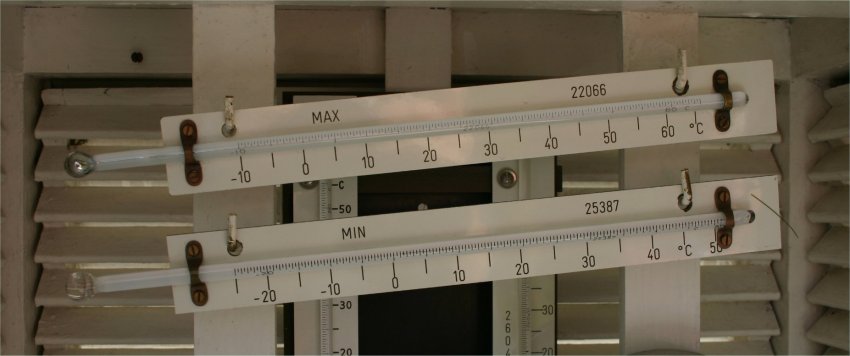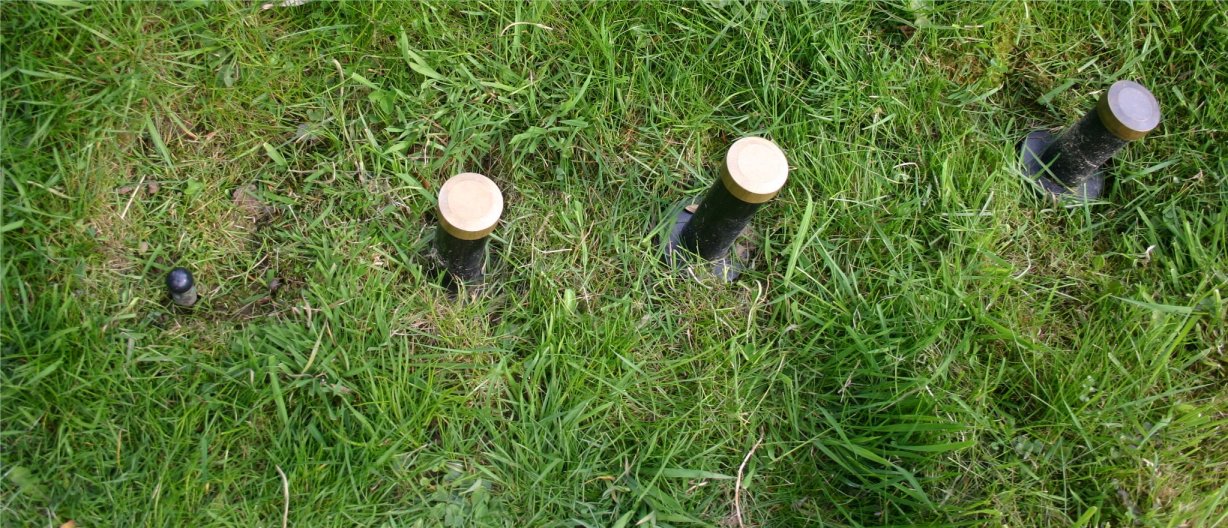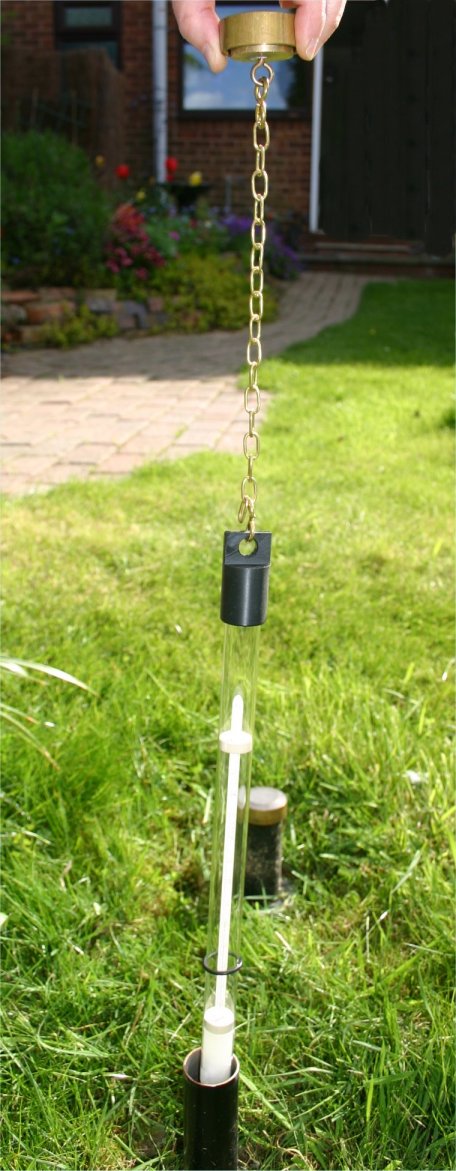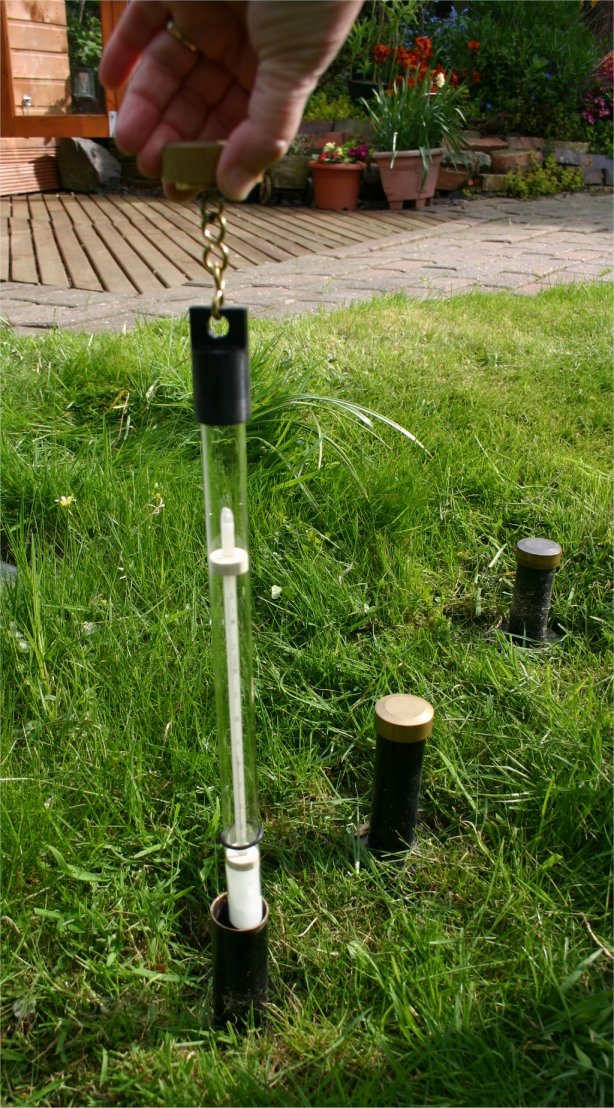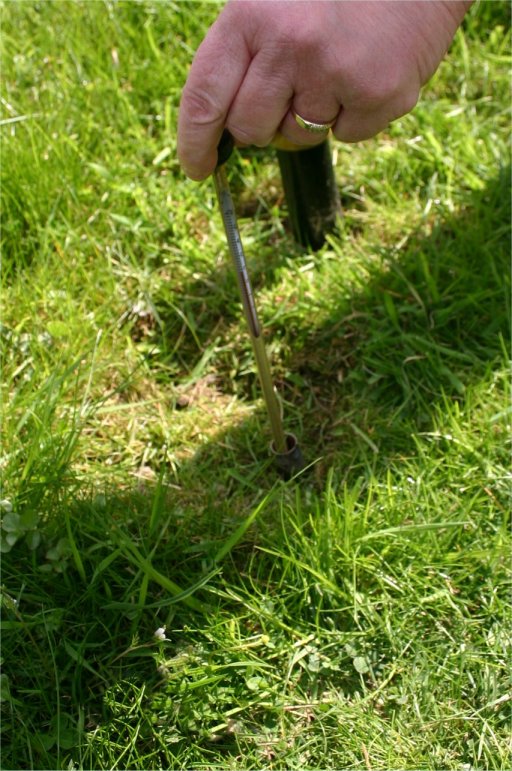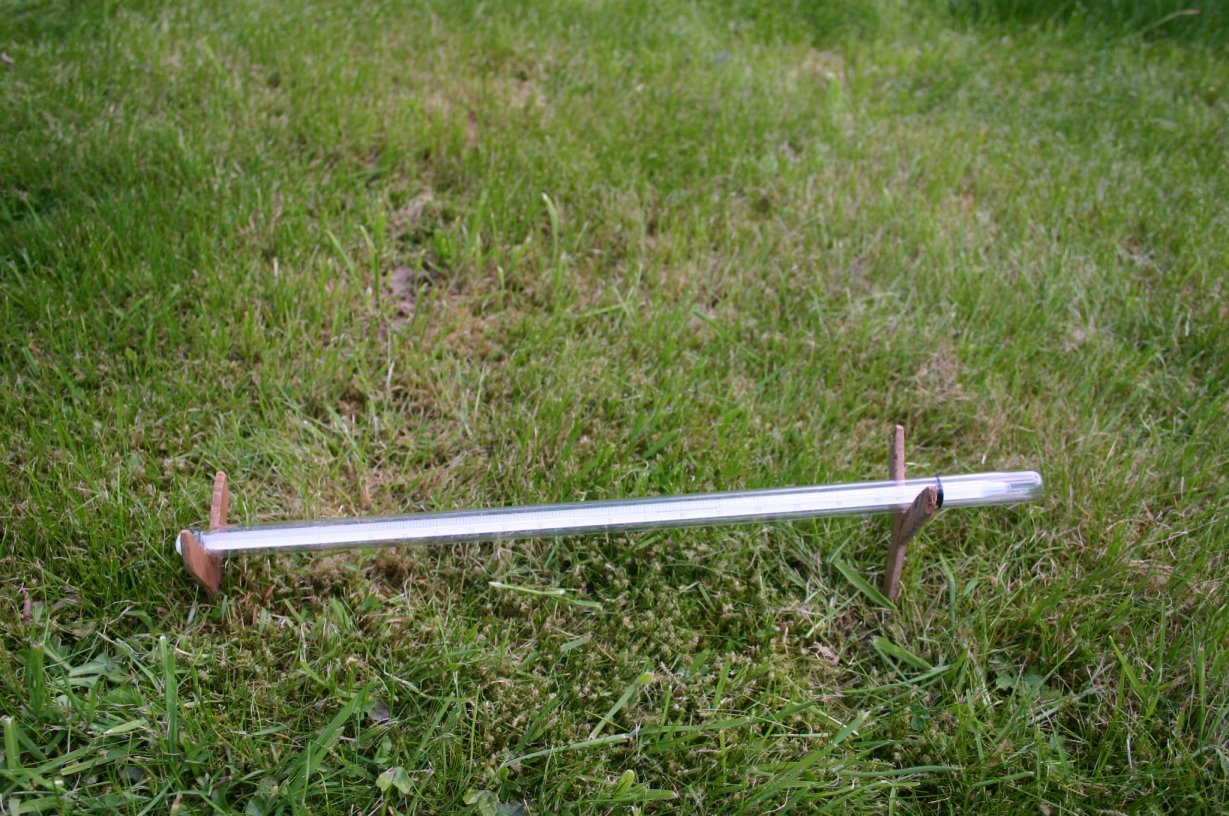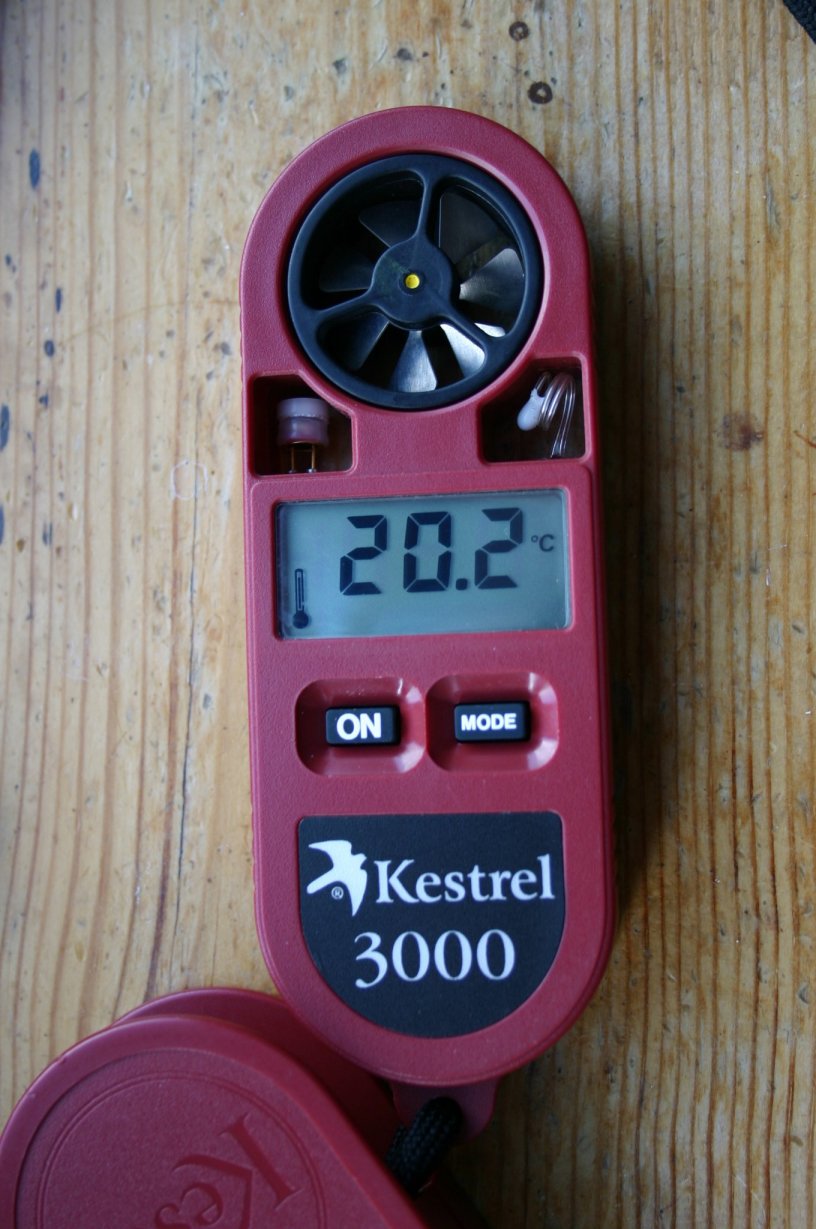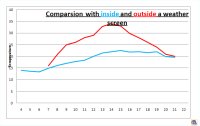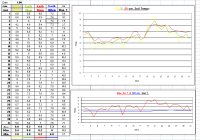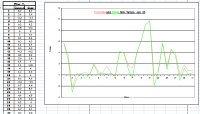More about Temperature Readings
Some professionals and keen amateurs take a variety of temperature readings using special thermometers. Some of these are very expensive, as they are accurate scientific instruments. The readings they take give them more information to understand what is happening with the weather.
The examples here are used by an amateur. There are special rules about where to place special thermometers, and this is not always possible in a garden or in the school grounds. Still it is interesting to collect this extra data.
When you have finished reading about this you may want to return to the Temperature Readings page, a whole page about Six's maximum and minimum thermometers, or the Collecting Data page. If you want cooling down you could got to Below Freezing, or if you want warming up you could go to Sunshine.
Thermometers in the Stevenson screenHere, instead of a Six's thermometer, there are two separate thermometers for measuring the maximum and minimum
temperature. |
|
Resetting the maximum thermometerThis video clip shows how to set the special maximum thermometer shown in the picture above. Do not do this to ordinary thermometers. |
[No speech] |
Soil ThermometersThis picture shows a set of four soil thermometers. They reach down into the ground to take the temperatures at different depths. As so much of our food grows in the soil, it's temperature is very important. The soil can also act rather like a storage heater, absorbing heat and giving it off. What do you think will be the difference between shallower and deeper thermometer readings? See the file on the right for some data. |
|
1 Metre Soil ThermometerThis soil thermometer measures the temperature one metre down in the soil. You can see in the video that it is suspended on a long chain. The changes in these readings are very slow. It takes a long time for the warmth of summer or the cold of winter to get one whole metre underground. Look at the 50 Centimetre Thermometer for more information. |
|
50 Centimetre Soil ThermometerThe chain on this thermometer is shorter than on the one metre deep thermometer. This thermometer measures the temperature fifty centimetres deep in the soil. The thermometer is contained in a glass container. There is wax around the bulb where the reading is actually taken. This means that when the thermometer is lifted out to be read, the temperature will not change. It will only change slowly, as the soil temperature will. Can you see the little lid on the end of the chain? What do you think it is for? |
|
30 Centimetre Soil ThermometerThis thermometer is the same as the one metre and fifty centimetre thermometers. It has a shorter chain and is used to measure the temperature 30cm deep. Can you see the little ring just above the wax? This is to protect it as it is placed into the tube. Each soil thermometer has a tube with a sealed end placed in the ground. This makes it easier to remove the thermometers to read the temperatures. |
|
20 Centimetre Soil ThermometerThis type of thermometer can be bought in garden centres and farming supplies shops. It helps know when the soil is warm enough for seeds to germinate. It is easy to set up in the garden. Just bury a tube in the soil to make it easier to take the readings. Be quick when you read this thermometer or you will be reading the air temperature instead of the soil temperature. |
|
Grass ThermometerThis thermometer is used to record the lowest temperature over night. It has a pin which records the lowest temperature. The thermometer is mounted on two little stands which place it just above the grass. If you wanted to take these readings your could use a Six's thermometer in a similar way. See the file on the right for a comparison of the grass and concrete minimum temperatures data. |
|
Concrete ThermometerThis is similar to the grass thermometer. It reads the temperature on a slab of concrete. The lowest temperature overnight is recorded. Concrete and grass have different properties. It is interesting to compare the two readings. See the file on the right for a comparison of the grass and concrete minimum temperatures data. |
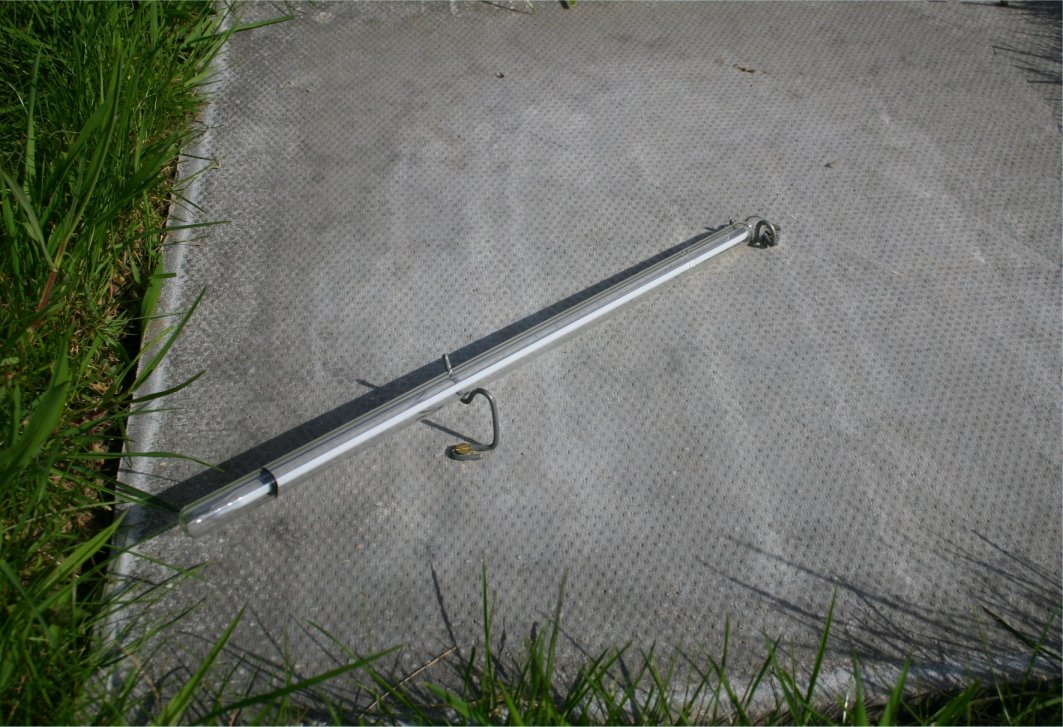 |
Remote Concrete and Grass ThermometersThese sensors are in a fenced compound containing professional weather instruments. The grass and concrete readings are being taken by remote digital sensors. The grass has been kept short, as it should be. |
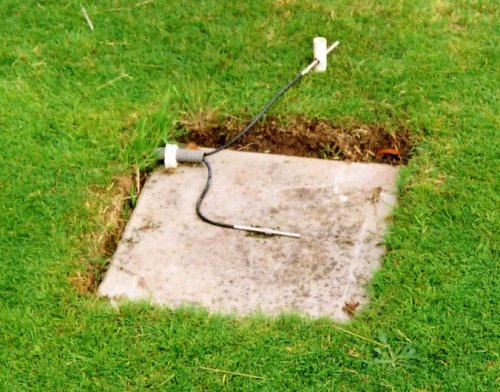 |
Cats on ConcreteThese two cats often like to roll about on the concrete. They seem to know that it is often warm when the grass is not. Although concrete might take a while to warm up, it stays warm for longer afterwards. This is why bricks are used in storage heaters. They heat up slowly and release their heat slowly. |
 |
Dial ThermometerSome thermometers use a pointer and a dial to show temperatures. On this example the red pointer is showing the temperature and the blue pointer is showing the humidity. It also shows how comfortable the combination of temperature and humidity might be, |
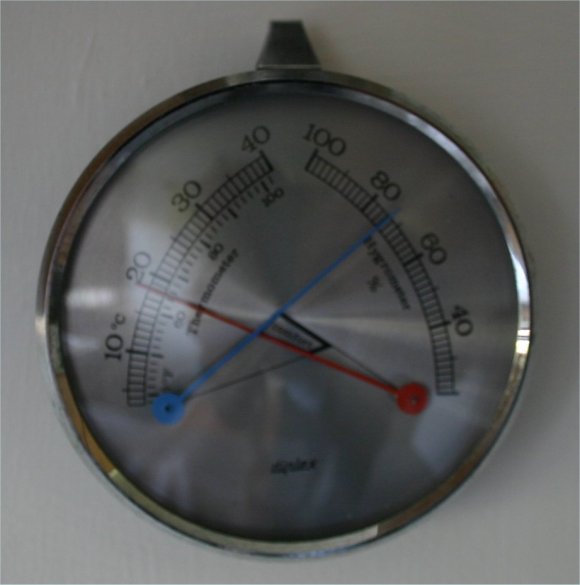 |
Using ICTHere a portable weather monitor is being used to take a temperature reading.
This reminds us that decimal places can be used to record temperature.
Using .25, .5 or .75 for a quarter, half and three quarters
is quite easy even with an ordinary thermometer. Using a digital
thermometer like this can give tenths of a degree Celsius. |
Please Note
Please be conscious of any safety issues regarding these activities. It may be advisable to avoid any instruments which contain mercury.
